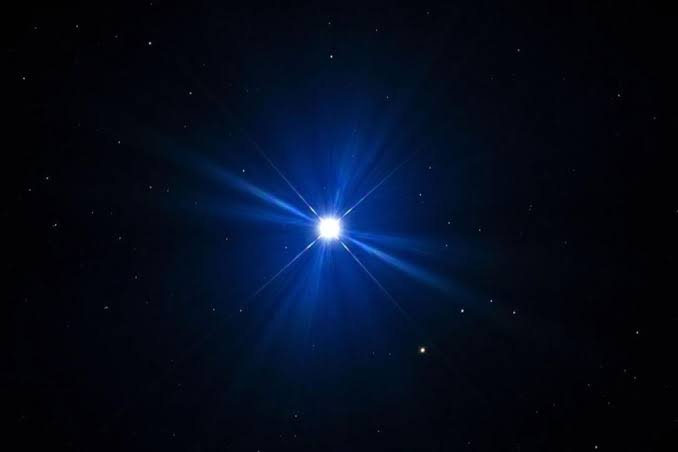The Suhail Star, also known as Canopus in astronomical terms, holds a significant place in the culture, history, and natural rhythms of the Arabian Peninsula and its neighboring regions. Visible in the UAE and other parts of the Middle East during late summer, the star marks the arrival of cooler weather and the beginning of seasonal transitions. For centuries, Suhail has been more than just a celestial body; it has been a guiding light for sailors, farmers, and poets alike.
Astronomical Identity of Suhail
Canopus, the second-brightest star in the night sky after Sirius, is located in the constellation Carina. It lies approximately 310 light-years away from Earth and boasts a luminosity that is over 10,000 times greater than that of the Sun. Its brilliance and position in the southern sky make it an easily recognizable feature for stargazers.
In the UAE, Suhail becomes visible in the southeastern horizon around late August or early September. Its appearance heralds the end of the intense summer heat, bringing hope for milder temperatures and a shift in daily activities.


Cultural Significance in the Arabian Peninsula
1. A Marker of Seasonal Change
Historically, the sighting of Suhail has been associated with the onset of autumn. In a region characterized by extreme summer heat, the star’s reappearance signifies relief and a gradual cooling of the weather. This change affects agriculture, travel, and daily life, making Suhail a critical marker in the yearly calendar.
For Bedouins, farmers, and fishermen, Suhail’s arrival was an indication to prepare for the upcoming agricultural season or to embark on safer sea voyages. The star’s presence often coincides with the start of date harvesting, a pivotal event in the region’s agrarian traditions.
2. Navigation and Maritime Guidance
Before the advent of modern navigation tools, sailors in the Arabian Gulf relied heavily on the stars to chart their courses. Suhail, with its distinct brightness, served as a vital reference point for seafarers traversing the open waters. Its position in the southern sky provided guidance during long and perilous journeys.
Even today, Suhail is remembered as a symbol of the ingenuity and resilience of those who navigated the seas with nothing but the stars as their compass.
3. Inspiration in Poetry and Literature
The Suhail Star has also found its place in Arabic poetry and folklore, where it is often associated with beauty, hope, and renewal. Poets have likened its appearance to the arrival of good news or the calming of a storm. Its brilliance and reliability have made it a metaphor for guidance and constancy in an ever-changing world.
The Science Behind Suhail’s Seasonal Impact
While the Suhail Star itself does not directly influence the weather, its visibility aligns with natural climatic patterns in the Arabian Peninsula. During late August and early September, the Earth’s tilt and orbital position result in shorter days and cooler nights in the region. This period also sees a gradual reduction in the intensity of the Shamal winds, which bring hot, dry air from the north.
The correlation between Suhail’s appearance and these changes has solidified its role as a reliable seasonal marker, even in the age of advanced meteorological science.
Observing Suhail in the UAE
Stargazing enthusiasts in the UAE eagerly await the annual reappearance of Suhail. The best time to observe the star is during the pre-dawn hours when it rises above the southeastern horizon. Clear skies and minimal light pollution enhance the viewing experience, making desert areas ideal for observation.
Modern technology has made it easier to track Suhail’s appearance. Astronomy apps and online tools provide precise timings and locations, allowing enthusiasts to plan their stargazing sessions effectively.
Suhail in the Context of Climate and Sustainability
The Suhail Star’s role as a seasonal marker highlights the deep connection between celestial events and environmental awareness. In a time when climate change poses significant challenges, Suhail serves as a reminder of the delicate balance between human activities and natural rhythms.
For the UAE, a nation committed to sustainability, the lessons of Suhail are particularly relevant. Its association with agricultural cycles underscores the importance of respecting natural patterns and adopting practices that harmonize with the environment. From water conservation to renewable energy initiatives, the principles symbolized by Suhail find expression in the country’s vision for a sustainable future.
The Suhail Star in Modern Times
While technological advancements have replaced many traditional methods of navigation and weather prediction, the Suhail Star retains its cultural and symbolic significance. It is celebrated in festivals, educational programs, and public outreach initiatives that aim to preserve the region’s rich astronomical heritage.
In schools and universities, Suhail is often included in discussions about astronomy and cultural history, bridging the gap between science and tradition. For younger generations, it serves as an entry point into the fascinating world of stargazing and the broader universe.
Conclusion
The Suhail Star stands as a timeless symbol of guidance, hope, and renewal. Whether as a practical tool for navigation, a harbinger of seasonal change, or an inspiration for art and poetry, Suhail continues to illuminate the lives of those who look to the heavens for answers and direction.
In the UAE, Suhail’s annual appearance is a moment of collective reflection and celebration. It connects the past with the present, reminding everyone of the enduring bond between humanity and the cosmos. As we gaze upon this brilliant star, we are reminded of the intricate dance of celestial bodies and their profound impact on life here on Earth.
Do follow Uae stories for more updates
Maheen Madad: The Multifaceted Creator Inspiring Through Music and Style













